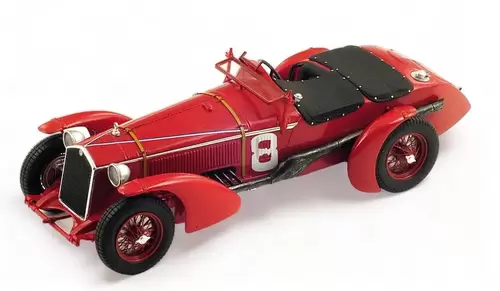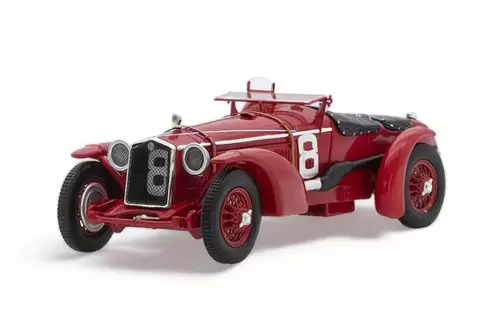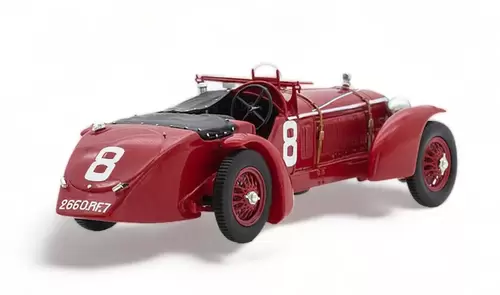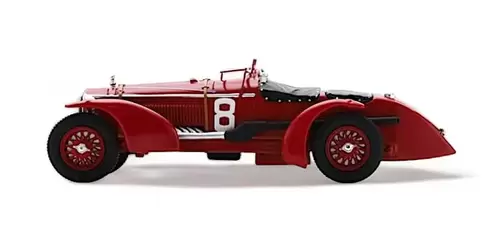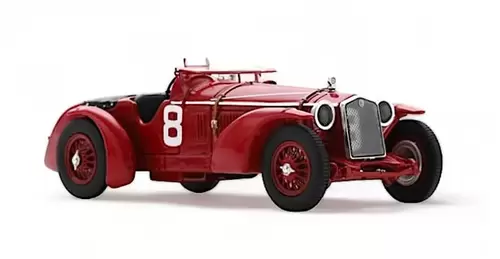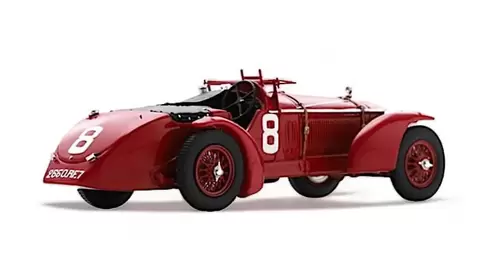Raymond Sommer, a rising star of French motor-racing, bought a short-wheelbase Mille Miglia corto 8C and asked Luigi Chinetti, an Italian émigré running the Alfa Romeo agency in Paris, about converting it to a four-door for touring car racing. The car was fitted with two small rear seats, an oversize fueltank, streamlined fairings, and an externally-mounted exhaust to reduce engine temperatures. Sommer also engaged Chinetti as his co-driver. The car was the only Alfa Romeo running on Englebert tires, while the others ran on Dunlop. The shorter wheelbase gave better handling as well as being 100 kg lighter. The team held the lead until 3 am, when they were stopped by a head-gasket failure. However, they managed to push on and drove the car very hard to make up the lost time, eventually winning the race.
Sommer and Chinetti were a formidable team. Sommer was a French racing driver who won the 24 Hours of Le Mans three times, in 1932, 1933, and 1934. Chinetti was an Italian-American racing driver who won the 24 Hours of Le Mans twice, in 1932 and 1934. They were both skilled drivers who were able to work together effectively to achieve victory.
The Alfa Romeo 8C 2300LM was a powerful and advanced car for its time. It was powered by a 2.3-liter straight-eight engine that produced 180 horsepower. The car was also lightweight, weighing just 1,000 kilograms. This combination of power and lightness made the 8C 2300LM a formidable competitor at Le Mans.
The victory of the Alfa Romeo 8C 2300LM #8 at the 24 Hours of Le Mans in 1932 was a major achievement for Alfa Romeo. It was the first time that an Italian car had won the race, and it helped to solidify Alfa Romeo's reputation as a manufacturer of world-class racing cars.

